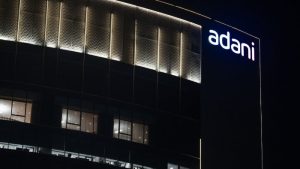US draws up draft Israel-Lebanon ceasefire plan
Unlock the US Election Countdown newsletter for free
The stories that matter on money and politics in the race for the White House
The US has drawn up a draft plan to end the war between Israel and Hizbollah, calling for an initial 60-day ceasefire and the withdrawal of the Lebanese militant group and Israeli troops from southern Lebanon.
But the proposal would also give Israeli forces the right to target Hizbollah “in self-defence against imminent threats to Israel,” and allow its war planes to continue flying over Lebanon for “intelligence, surveillance and reconnaissance,” according to a draft leaked to Kann, Israel’s state broadcaster on Wednesday evening.
The leak came hours before US envoys Amos Hochstein and Brett McGurk were due to arrive in Israel to discuss Washington’s efforts to end the more than year-long conflict. They were expected to present an updated version of the document to Israeli Prime Minister Benjamin Netanyahu, according to people familiar with the matter.
US officials confirmed that the document was authentic, but also cautioned that edits had been made to the leaked draft since last week, when the paper was dated.
“There are many reports and drafts circulating. They do not reflect the current state of negotiations,” National Security Council spokesman Sean Savett said.
People familiar with Lebanese government thinking said the draft was “still unacceptable,” since annexes would give Israel the ability to fire in “self-defence” at Lebanon and to ensure that Hizbollah “cannot reconstitute” in the south. A US “side letter” to Israel in the draft agreement reaffirms these principles.
“Israel can’t claim control over the south and air space,” said one of the people. A second person said that while the draft, as written, was “not workable” it could provide a basis for further negotiations.
Although weakened by Israel’s offensive, Iranian-backed Hizbollah — which triggered the conflict by firing on Israel in the wake of Hamas’s October 7, 2023 attack — remains Lebanon’s dominant political and military force. The country’s weak caretaker government could not agree to a deal, without Hizbollah’s acquiescence.
The US has for months been leading diplomatic efforts to end the conflict amid fears that it risked pushing the Middle East into an all-out war. The hostilities escalated in September after Israel assassinated Hizbollah’s leader Hassan Nasrallah, launched waves of air strikes across Lebanon and invaded the country’s south.
Washington’s push for a deal has focused on getting the warring sides to agree on the implementation of UN resolution 1701, which ended their last war in 2006. It called for the withdrawal of Hizbollah from Lebanon’s southern border with Israel and the end of Israeli flights over the Arab state. But it was not fully implemented by either side.
Under the terms of the draft proposal, the US would have a greater role in overseeing the implementation of the deal, including the initial two month transition period as the chair of an international “monitoring and enforcement mechanism”. This would also monitor any future violations once a permanent ceasefire is agreed.
Under the plan, the Lebanese Armed Forces (LAF) would deploy to the south and work alongside an existing UN peacekeeping force in the region. During the initial 60-day period, Lebanon would be obliged to “dismantle and confiscate all military assets, arms and infrastructure of all non-state armed groups in southern Lebanon”.
Israel would agree to a phased withdrawal of its troops from southern Lebanon in “no longer than” seven days after an agreement is reached.
Israeli defence minister Yoav Gallant told the Financial Times this weekend that Israel’s negotiations with Hizbollah would “only be held under fire,” insisting that the group withdraw north of the Litani River.
Israeli officials say their prime goal is to ensure northern Israel is safe to allow the return of some 60,000 Israelis forced from their homes by Hizbollah rocket fire.
But on Wednesday Israel ordered residents of the ancient town of Baalbek in eastern Lebanon’s Bekaa Valley to evacuate ahead of air strikes. Meanwhile Israeli ground forces continued their push further into the country’s south, calling on inhabitants to vacate several more villages in the region.
Hizbollah’s new leader Naim Qassem said in a televised speech on Wednesday that the group would accept an end to the war should Israel want that, “but it will be on our terms,” adding that political discussions had so far been fruitless.
“There has not yet been a proposal that Israel accepts to be offered to us for discussion,” Qassem said in his first speech since being named as the group’s new secretary-general. Until then, he said, “we continue the fight and will not beg for a ceasefire . . . We will remain on the path of war.”
#draws #draft #IsraelLebanon #ceasefire #plan





